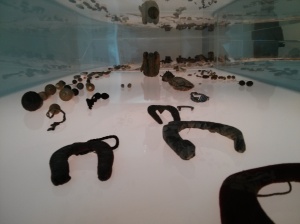16 February – 14 April 2013
Amulets have appeared throughout history and across cultures in a variety of forms. They are tiny embodiments of the anxieties we feel and their assumed powers often draw on the dark arts of superstition and magic.
Charmed Life is curated by artist Felicity Powell and features 380 amulets from the Pitt Rivers Museum, University of Oxford. The amulets, ranging from simple coins to meticulously carved shells, dead animals to elaborately fashioned notes, were collected by the banker and obsessive folklorist Edward Lovett who scoured London by night, buying curious objects mostly from the East End of London.
The exhibition includes new pieces and videos by the artist.
A touring exhibition from Wellcome Collection, London in partnership with Pitt Rivers Museum, University of Oxford.




